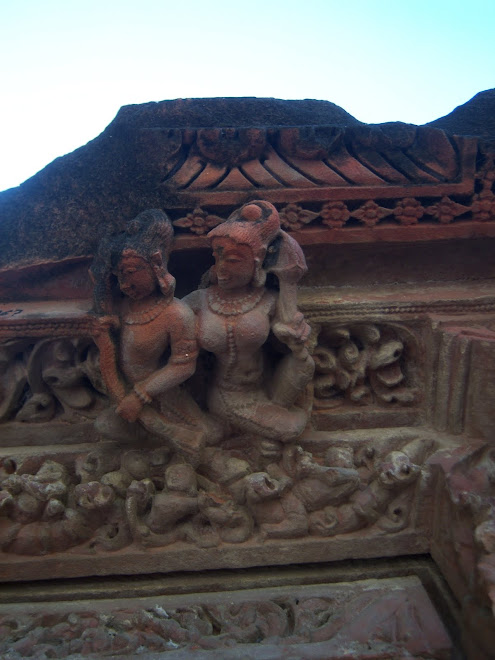
2. Hoysaleswara Temple Halebid Karnataka (Dwarsamudra)

3. Ranakpur Adinath Temple

1. the jain Basadi Lakkundi Karnataka Western Chalukya

Mother and child Aihole Karnataka
They say India is too vast to be explored in one lifetime. I think what they mean is it is too vast and varied socio-culturally that one need to feel India and not merely see it. IN the beginning of the year I spent time exploring karanataka. Starting from Badami Chalukyas to Western or Kalayani Chalukyas to Pattadkal, Aihole, Dambol, Lakkundi, Hoysalas , Vijayanagara, Gometeswara, Mysore, Srirangpatta etc. it was there that I realised that the development from the lathe turned pillars of Kalyani Chalukays (pic 1. Lathe turned pillars) to highly ornate and decorative pillars at Dilwara and Ranakpur(pic 3) temples was evolution of an artistic thought. the Dilwara temples were built by one branch of Chalukyas. One thing leads to other, and I went around studying Gurjara Pratihara, Parmars, Chauhans and of course I confronted the 5000 year old Ahar Civilization that was a rural contemporary of Harappa and was located 2 Km. from Suraj Pol of Udaipur city. I stumbled upon interesting artefact and coincidences in cultures separated by large gap of time. All this curosity helped to educate me and to improve my understanding of Indian art and culture. Incidentally Rajasthan was a very important part of the Harappa/ Mohenjo Daro civilization Kali Bangan, Anupgarh, and many other sites have been found that were important part of the vast urban empire of Harappans. Rajasthan thus traces its civilization far back in prehistoric times and in line with the international trade conducted by Harappan it continued in Historic times to carry on with its caravans to the European lands especially the Rome.
 2. Hoysaleswara Temple Halebid Karnataka (Dwarsamudra)
2. Hoysaleswara Temple Halebid Karnataka (Dwarsamudra) 3. Ranakpur Adinath Temple
3. Ranakpur Adinath Temple 1. the jain Basadi Lakkundi Karnataka Western Chalukya
1. the jain Basadi Lakkundi Karnataka Western Chalukya















No comments:
Post a Comment